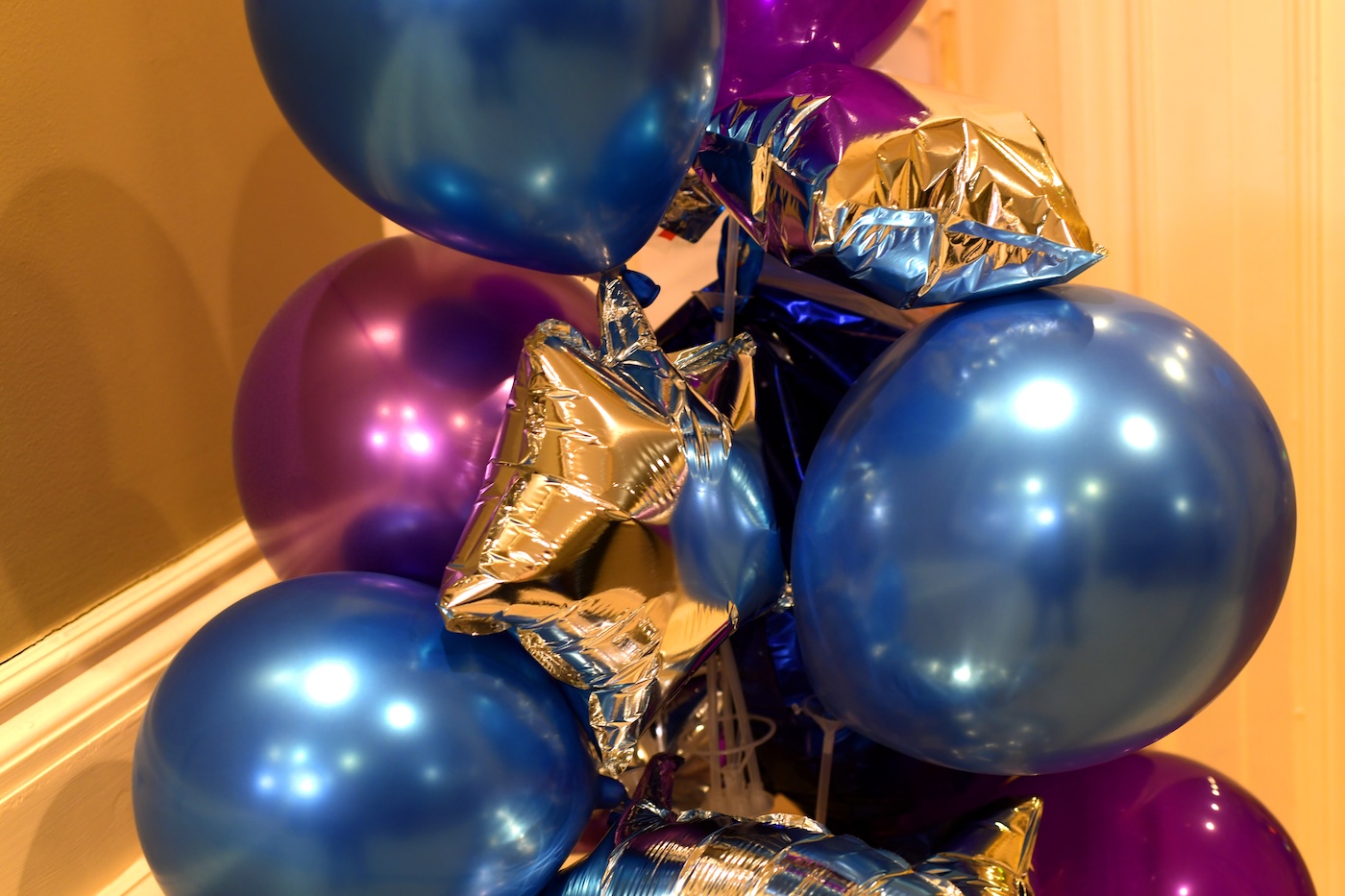Artist Mariah Reading ’16 Turns Litter into Landscapes
By Rebecca Goldfine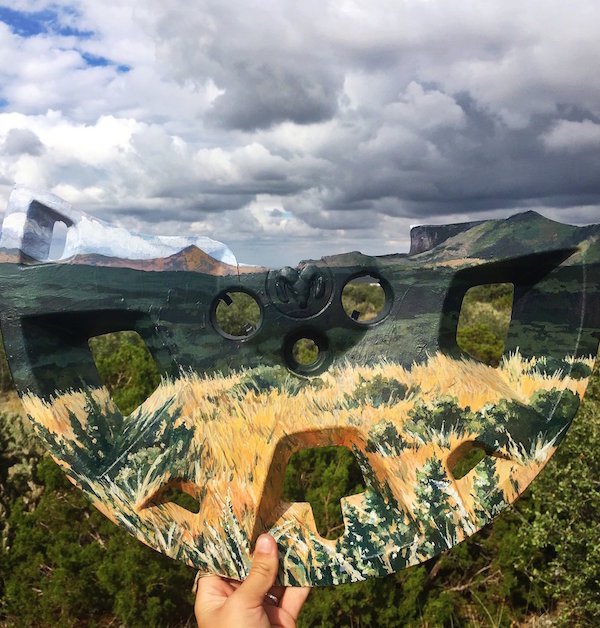
This epiphany she had last summer helped give birth to a project in which Reading transforms litter and debris that mar the landscape into works of art that reflect its beauty. In her current project, Recycled Landscapes, each work has a piece of litter Reading has painted into the environment.
While she’s always been concerned about waste and pollution, Reading is now an avid picker-upper of litter she finds in parks and other conserved lands. “I’ve developed hoarder tendencies!” she joked.
National parks seem to be appreciating Reading’s practical focus on cleaning up natural spaces, as well as her artistic treatment of their lands. Reading said her interest in making art that speaks to the ways humans connect to the outdoors is in harmony with the parks’ goal to teach their visitors how to care for the land and to leave no trace.
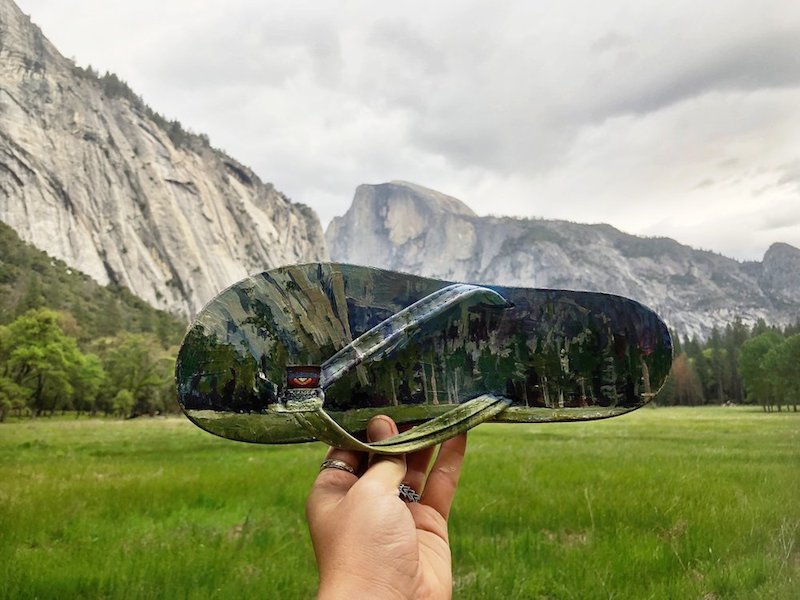

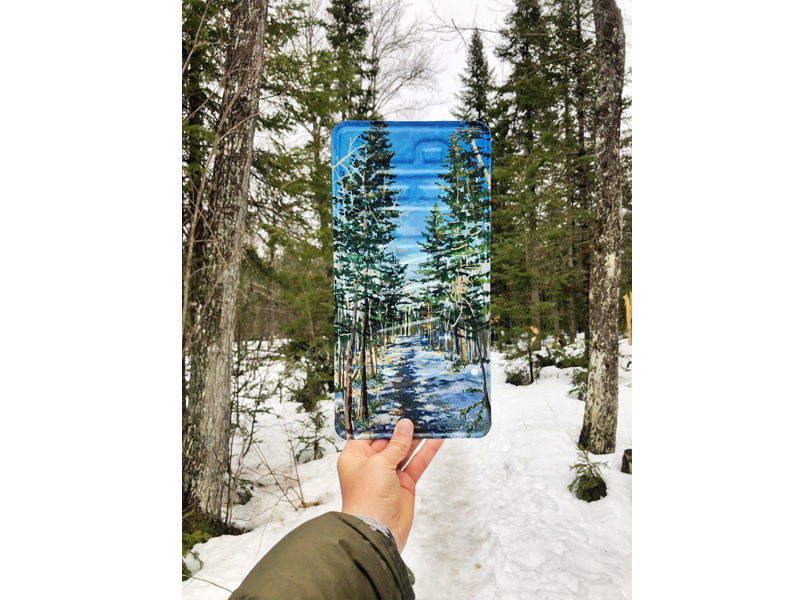
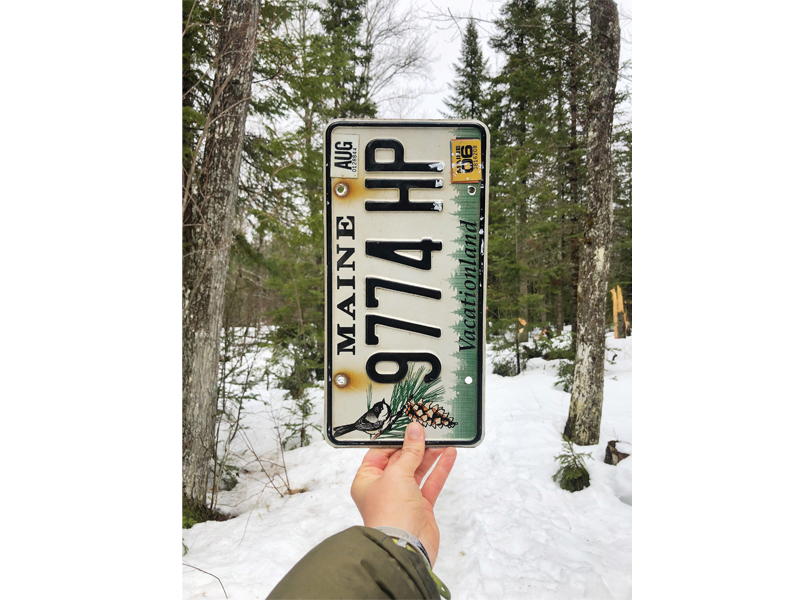


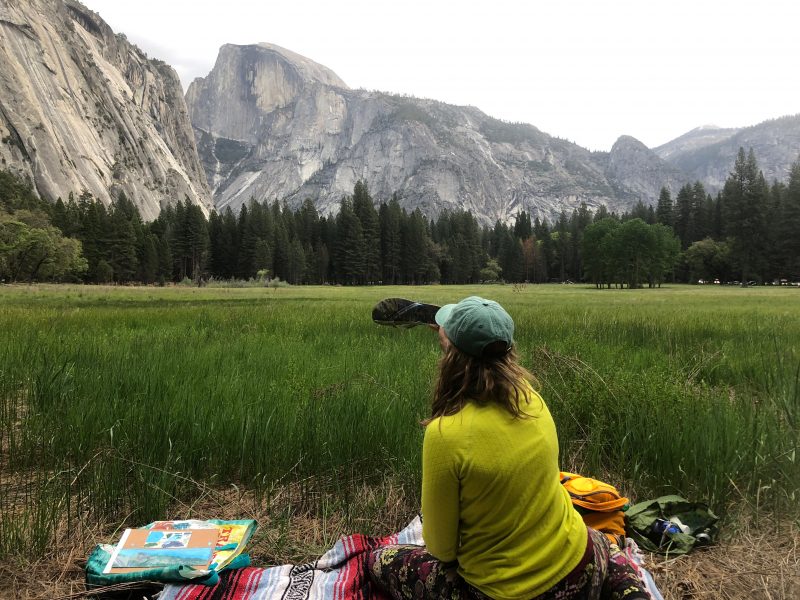


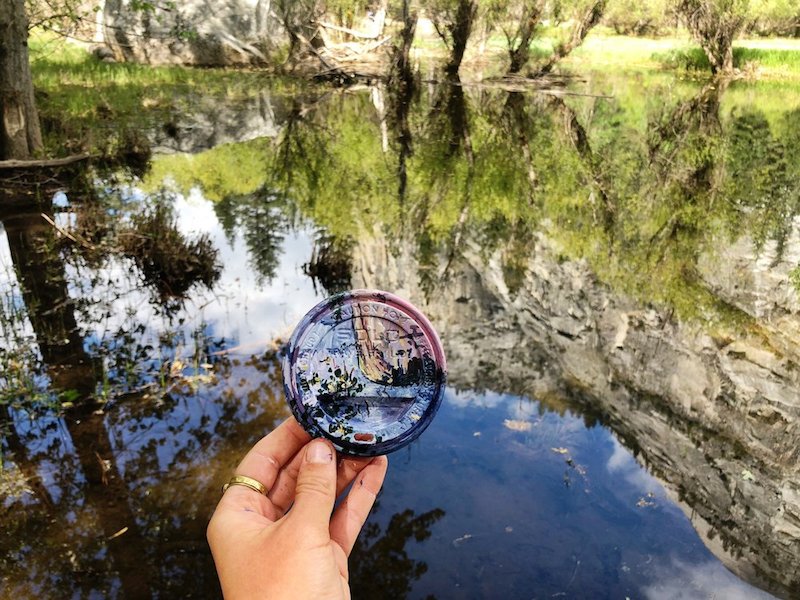
This summer she has art residencies at Denali National Park and McKinley Chalet Resort in Alaska, and at Zion National Park in Utah. Last summer, she was an “Arts-in-the-Parks” volunteer at Guadalupe Mountains National Park. During these residencies, Reading lives within the boundaries of the park, making her own art, giving talks, and leading art workshops “to inspire others to make their own creations in response to the landscape.”
“I usually visit these beautiful places and have to leave immediately,” Reading said. “It’s really nice to stay in the park and get to know the land and the colors.”
At Bowdoin, Reading was a visual arts major and education minor. For the past two years, she has worked as a teacher at Crane Country Day School in Santa Barbara, Calif.
Growing up in Bangor, Maine, Reading has always had an appreciation for the outdoors. But it wasn’t until her senior year at Bowdoin that she became especially concerned about the amount of waste people produce, even artists like her who love nature.
“I couldn’t validate being a landscape painter if the materials I used to paint with ended up feeding a landfill,” she said. “So I started using recycled material and crusty paintbrushes and paint cans to paint landscapes on.”
Her ultimate desire, she said, quoting the children’s book Miss Rumphius, is “to make the world a more beautiful place,” she said, which she accomplishes both by picking up waste and using it to create beautiful landscape paintings. “We can’t afford to keep making and making and not reusing.”



